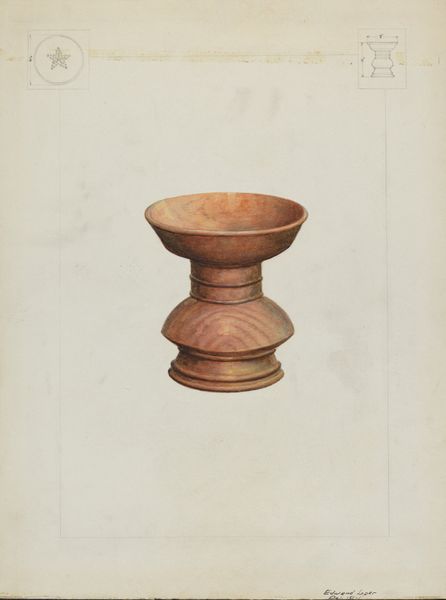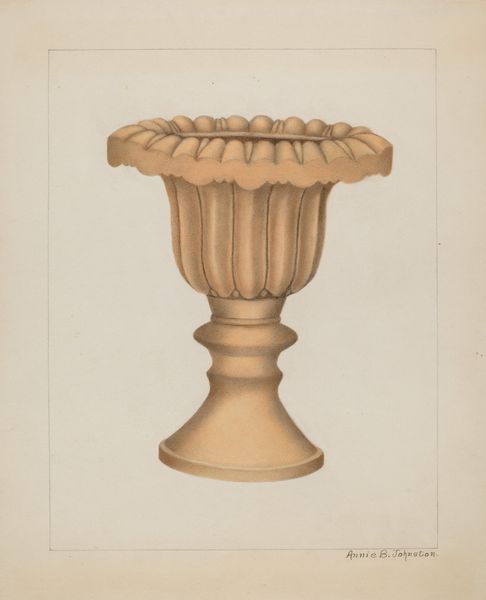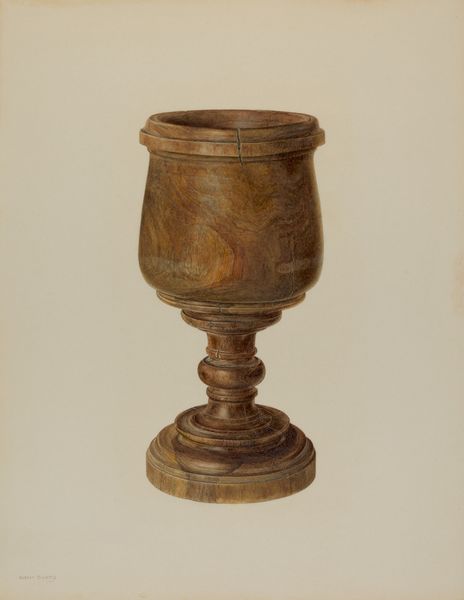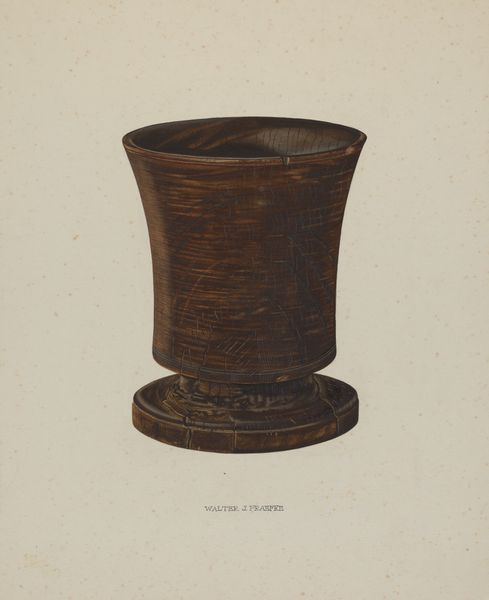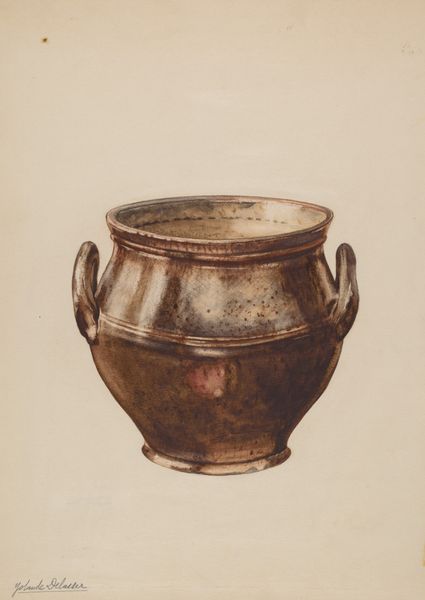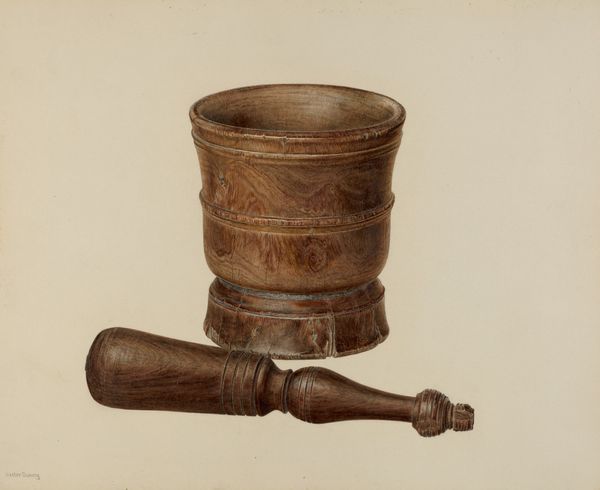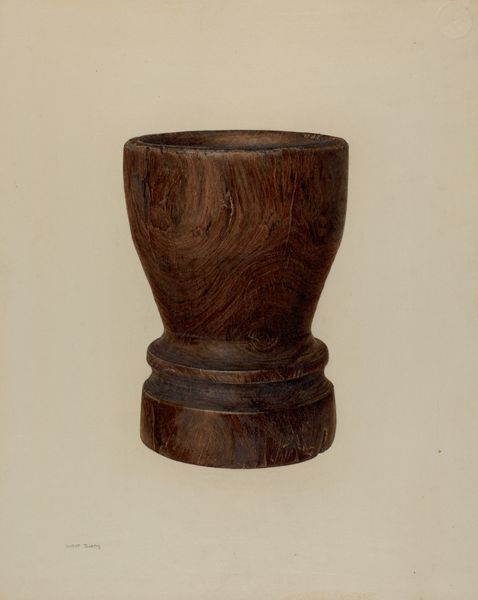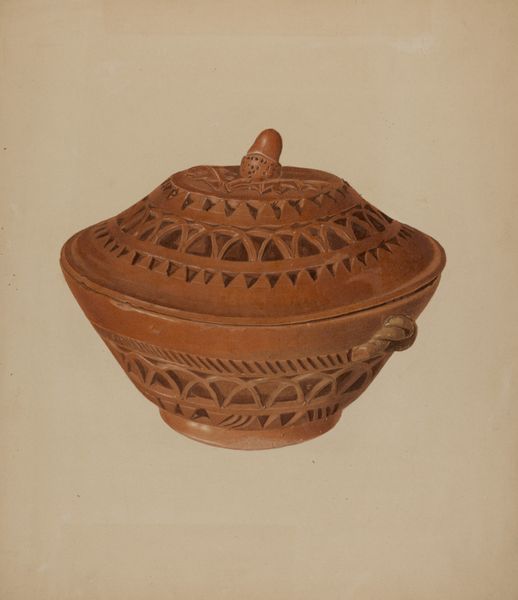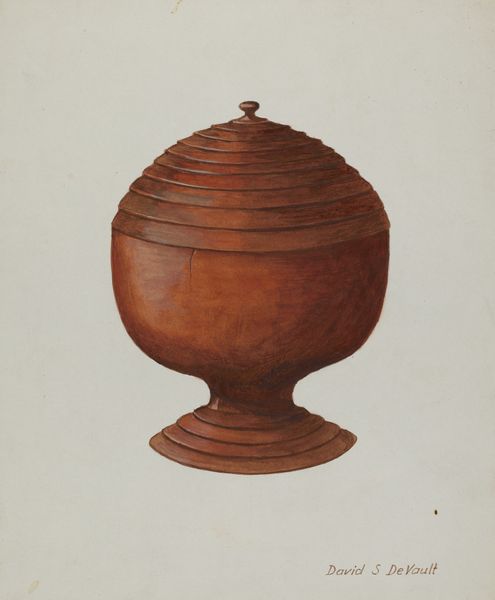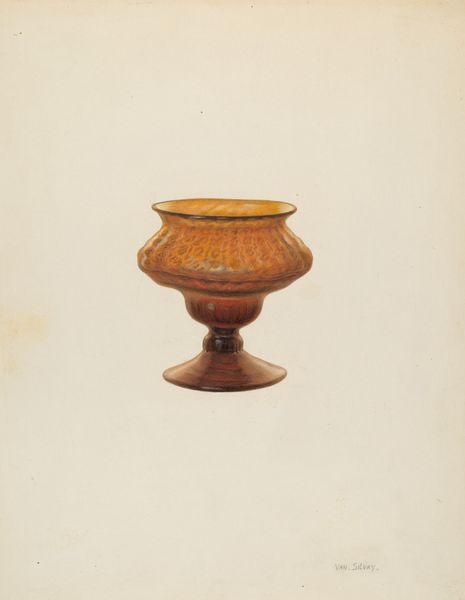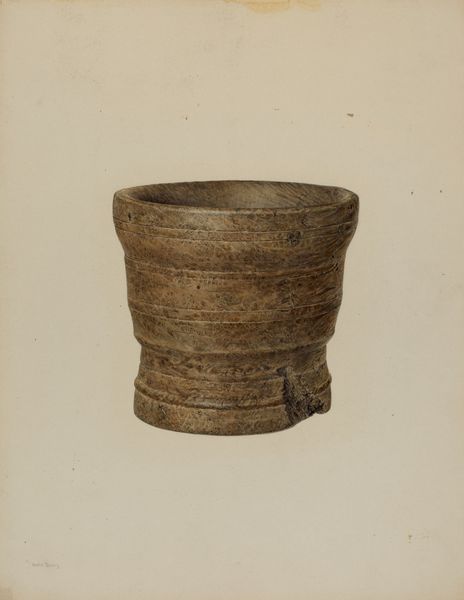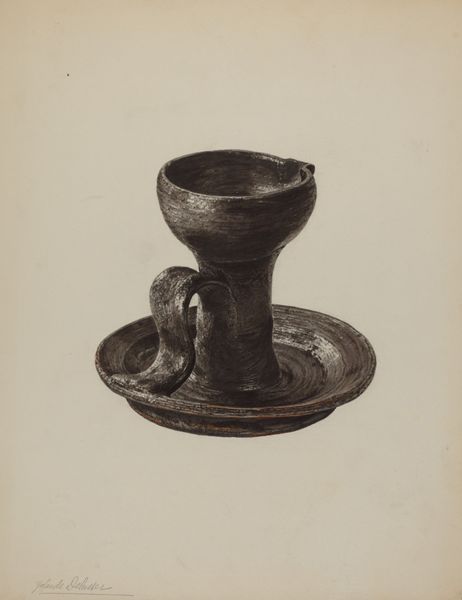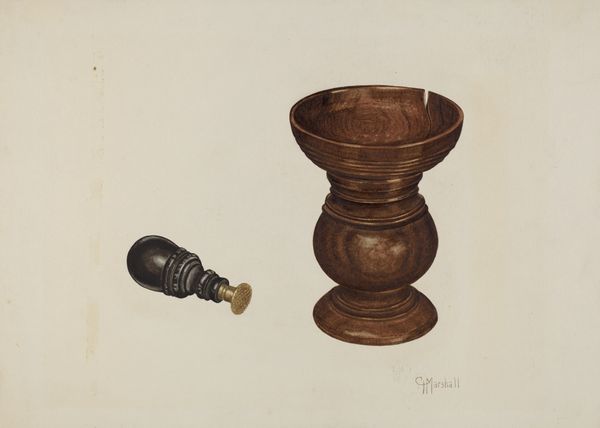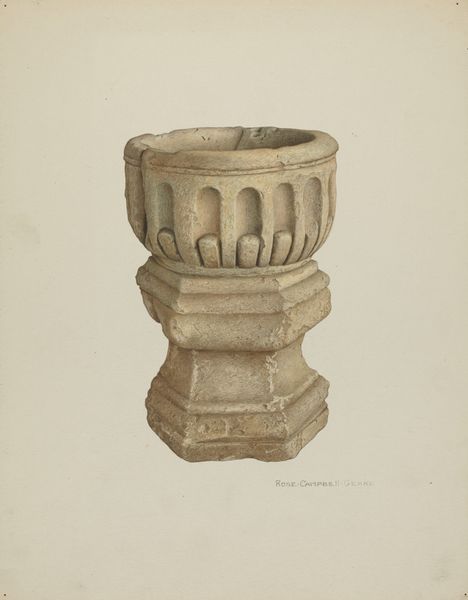
drawing, painting, ceramic, watercolor
#
drawing
#
painting
#
ceramic
#
watercolor
#
ceramic
#
watercolour illustration
#
decorative-art
Dimensions: overall: 36.8 x 28.3 cm (14 1/2 x 11 1/8 in.) Original IAD Object: Rendered exact size.
Copyright: National Gallery of Art: CC0 1.0
Curator: I’m immediately struck by the quietude of this "Flower Pot," around 1939, by Fritz Boehmer. It's simple but feels like a deeply observed moment. Editor: Yes, that's it exactly! It possesses an undeniable stillness. Looking closer, the artist has used watercolor and drawing techniques to depict what seems to be a simple ceramic pot, but I see layers upon layers of historical memory baked into its form. Curator: Historical memory? Tell me more. Is it about ancient Greece? Editor: Well, in a way, yes, or at least that's part of it. The shape and symmetry remind me of Grecian urns, of course, designed to carry precious contents, memories if you will. But it's more the universality of vessels that grab my attention—how cultures imprint their souls onto everyday objects. This "Flower Pot" transcends mere utility. It becomes a cultural artifact. The artist's sensitive rendering emphasizes how much meaning such forms convey, particularly that band of embossed flowers circling its waist. They remind me of hope, growth, persistence... the basic stuff. Curator: The persistence of life in the face of everything, including, in 1939, war and maybe this pot was exactly the object which stood for survival to Boehmer at this period in history. But look also the colors are subdued; the palette almost earthen; the shadow rendered gives a weightness. It anchors the ethereal flowers and offers the viewer some reassurance about what could grow out of them! Editor: Absolutely, there's a groundedness in those muted tones—a comforting tactility. But those flowers…aren't they subtly stylized? Curator: They do look intentionally simple and elegant. They seem to say this "Flower Pot" is more than simply functional but is striving to some kind of timeless aspiration... the very essence of an ideal. I see more in it the more that I talk about it. I see the ceramic is a sign to aspire and bloom. Editor: A miniature cosmos, ready for its seedlings of hope. And I will always feel, in my humble understanding, that humans create symbolic forms in times of chaos and crisis to make sense and try to endure difficult conditions. In summary, its elegance echoes across epochs. Curator: It's funny—an object intended to hold life acting as a kind of emotional wellspring. And perhaps Fritz Boehmer's hope. I find that utterly beautiful.
Comments
No comments
Be the first to comment and join the conversation on the ultimate creative platform.
